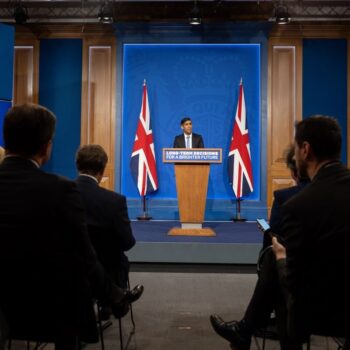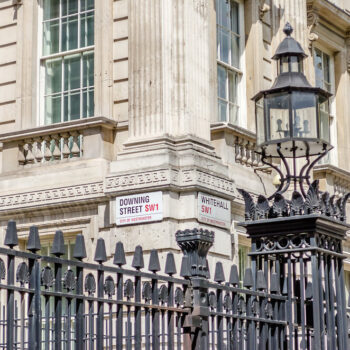The report by the National Audit Office published yesterday is a damning indictment of the failure of the last coalition Government’s flagship home energy efficiency schemes, the Green Deal and the Energy Company Obligation.
Perhaps the most startling statistic is that each Green Deal loan cost the taxpayer £17,000 due to appallingly low take up rates. Only 14,000 households had taken out loans by the time the scheme was scrapped last year, despite a pledge by Ministers to Parliament in 2011 that it would improve the energy efficiency of the entire housing stock. The scheme cost £240 million to set up, support and administer yet saved no carbon emissions.
The report also found that the Energy Company Obligation (ECO) scheme, despite delivering 96% of the energy efficiency measures into households over the last two years, has also failed. The number of measures being installed crashed by more than three quarters compared to its predecessor. This was partly down to the poor design of the ECO and partly down to the levy being cut. The ECO was also far more expensive that its predecessor in terms of carbon savings, costing £95 per tonne of CO₂ saved instead of £32 per tonne.
The long and short of it is that these schemes have been a monumental failure, setting us back years in the fight to de-carbonise our homes and end fuel poverty. So how on earth did this happen?
The NAO helps answer that question. One key conclusion is that the Government was warned by many stakeholders that the Green Deal would not work, but Ministers and officials did not listen. I remember my own experience of setting out my deep reservations to DECC on the Green Deal’s development at the time and having them flatly rejected.
The force that drove that rejection was an evangelical belief by the Ministers at the time that the market could deliver without significant government support. They believed that the huge barriers which stood in the way of millions of households taking up energy efficiency measures could be overcome simply by a loan scheme subject to healthy competition and smart marketing. They considered the interest rate on the loans hardly relevant.
Yet the evidence from other countries that have pioneered successful loan schemes is that ultra low interest rates are a key ingredient to persuade people to take them out. A green deal has to be a good deal. The German infrastructure bank overseeing their scheme, which was based on a 1% interest rate, told us that subsidising the interest rate on energy efficiency loans not only generated strong economic returns for the German economy but the German finance ministry loved these low interest loans because they got back five times more in tax revenue than it cost to subsidise. They were delivering more than 200,000 loans a year. They sent us the evidence which we sent to DECC.
This evidence was totally ignored by the UK Government. When we told the German Government officials about the Green Deal and the plan not to subsidise the interest rate, they were visibly shocked. They shook their heads and said, ‘It will not work’. They have been proved right.
The first lesson here for the Government as they design the replacement scheme to the Green Deal is to listen to the international evidence on how to drive consumer demand and to thoroughly test any new scheme with consumers first. If they had done that before they would have found out very quickly that their Green Deal scheme was headed for disaster.
The second key lesson is to listen to the economic evidence. A review last year by Frontier Economics of the Government’s own economic data on infrastructure projects showed that an energy efficiency programme delivers economic returns comparable to road and rail projects.
Yet at the moment the entire cost of domestic energy efficiency programme is loaded on to energy bills and not one penny of the £120 billion capital infrastructure budget set out for this Parliament has been allocated to helping make homes energy efficient. And this is despite the fact that the UK energy efficiency programme is included for the first time in the UK’s latest Infrastructure Delivery Plan which was published last week.
Is it really ok for the Government to spend £50 billion of infrastructure funds on a new high speed railway line but not one penny of capital funds on helping us to re-build our housing infrastructure to make it fit for the 21st century?
The imperative to do so is growing. Our homes are responsible for over a quarter of the UK’s energy demand and carbon emissions and are among the least energy efficient in Europe. As the NAO points out, 75% of UK homes, approximately 20 million, have a poor level of energy efficiency, rated EPC Band D or below.
We will have to entirely de-carbonise our housing stock in order to meet our obligation to help keep global temperatures ‘well below 2 degrees centigrade’ as set out in the historic Paris Agreement last December. That means making all homes energy efficient and delivering zero carbon heat. It will require energy efficiency investment which alone is five times greater than the investment now being delivered.
This is the mother of all infrastructure projects. It must be our priority infrastructure project. The good news is that when done properly that investment is more than affordable, it drives strong growth, and without it we will never end fuel poverty or meet our climate targets. No other infrastructure investment can deliver so much for so many.
Also available:
Energy efficiency – an infrastructure priority, by Frontier Economics
Building the Future – The Economic and Fiscal impacts of making homes energy efficient by Cambridge Econometrics


